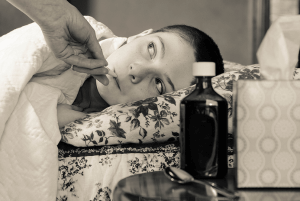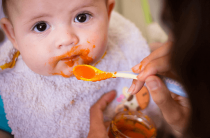Allergy, unfortunately for parents, is a hereditary disease. In 8 cases out of 10, in couples where both parents are allergic, the child is also born with an allergy, this statistic is half as low with one parent who is allergic. Alas, even if neither parent suffers from this disease, the likelihood is higher and higher in the modern world that the child will be the first allergy sufferer in the family.
The reasons why allergies are so common in today's world are numerous. These include: environmental factors, the use of a large number of household chemicals, the use of various unnatural additives and preservatives in the food industry, too sterile living conditions, low physical activity, a large amount of stress. So, urban residents are at risk for allergies, since residents of rural areas have 5 times less statistics on the incidence of allergies.
All these unnatural and harmful factors affect the human immunity in an unfavorable way, resulting in hypersensitivity to normal, safe substances.
resulting in hypersensitivity to normal, safe substances.
Also, allergies can be a complication of numerous disorders of the endocrine system and the gastrointestinal tract.
Additional and very significant risk factors for food allergies are:
- Lack of normal breastfeeding in a child or its early termination. No dry formula can replace breast milk. Being the optimal means of feeding, breast milk in the course of millions of years of evolution has developed a high specificity for the baby's body, providing it with everything necessary for full growth and development. Breast milk also contributes to the normal formation of immunity.
- Violation of the diet for pregnant women. There are certain substances found in foods such as citrus fruits, honey, aged cheeses, raspberries, strawberries, which, being non-allergenic, provoke allergic reactions. Their use during pregnancy should be limited, or even removed from the diet if the mother suffers from allergies.
- Use of nicotine. Maternal tobacco smoking during pregnancy has numerous scientifically proven negative health effects on the fetus. In particular, this also applies to violations of the immune system, which provoke the development of allergic reactions in a child.
Allergy symptoms in a child
- Swelling and congestion of the nose, serous ducts, sneezing;
- Skin manifestations: rash, urticaria, discoloration of the skin, itching and peeling;
- Asthmatic manifestations: shortness of breath, cough, asthma attacks;
- Anaphylactic shock;
- Quincke's edema;
- Deterioration of general well-being, fever, weakness and drowsiness during the day
Special tests for allergens are needed to:
- to confirm a specific allergen, with food allergies, selected by the method of excluding food;
- in order to trace the trend in the development of allergies;
- to identify allergies to the active ingredients of drugs used to treat a child;
- if it is necessary to specify a specific allergen caused by flowering plants
Allergen testing for children
- Method of enzyme immunoassay. In this way, based on the examination of the material withdrawn from the venous blood, the presence and concentration of antibodies to certain allergens is determined. Must be done on an empty stomach.
- Skin test. This test consists in introducing various allergens through minimal incisions under the skin. It is necessary to monitor the patient's condition for several days, since the speed of the pathological immune response can vary from a few seconds to several days.
- The chemiluminescent method is a method that allows you to determine the presence of antibodies to several allergens at the same time, which is a significant convenience in diagnosis.
- Radioallergosorbent test. The advantage of this procedure is that it has a high specificity for allergens.
The test kits contain a large number of different allergens: plant pollen, allergens, mold and fungi excreted by animals; food allergens; toxic substances; allergens released during the life of parasitic worms.
Prerequisites for accurate analyses:
The child must be healthy from various infections, since in this case, with a high probability, the test results will be incorrect.
This is due to the large number of different antibodies in the child's body during viral infections. Within 5 days before the tests, it is necessary to refrain from anti-allergy drugs (antihistamines, glucocorticoids).
Before analysis, it is necessary to limit the child's contact with the allergen.
How to identify food allergies in a child?
 To begin with, products that are false allergens are excluded. This class of products contains substances that are not allergens for a person, disrupt the normal functioning of his immune system. The difference between these substances and allergens is that the reaction to them is not a pathology, but only a feature of the body. However, the symptoms they cause are indistinguishable from those of an allergy. These products include: beans, seafood, egg yolks, tomatoes, strawberries, raspberries, chocolate, honey.
To begin with, products that are false allergens are excluded. This class of products contains substances that are not allergens for a person, disrupt the normal functioning of his immune system. The difference between these substances and allergens is that the reaction to them is not a pathology, but only a feature of the body. However, the symptoms they cause are indistinguishable from those of an allergy. These products include: beans, seafood, egg yolks, tomatoes, strawberries, raspberries, chocolate, honey.
Next, you need to monitor the change in your child's condition when adding or eliminating certain foods in the diet. For this, a special diary is started, in which all products that are added and removed from the diet are noted with the exact observance of the date and time.
We strongly warn you against self-diagnosis and treatment of allergies. This should only be done by qualified professionals. Contact the clinic if you notice the first symptoms of an allergy.















